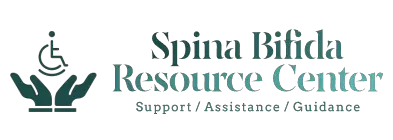Guide on Pregnancy & Fertility for Women with Spina Bifida (FAQ)
This page contains the most popular questions people have about genetics, pregnancy, and labor for people with Spina Bifida. Spina Bifida is a birth defect affecting about eight babies born every day in the U.S. Most cases of SB occur within the first trimester of pregnancy while other cases before most women even know they are pregnant.
Other than babies with SB, there are adults living with this chronic condition. Studies show most adults living with Spina Bifida are fertile and can have a healthy sex life. Women with this birth defect are able to get pregnant and deliver babies.
On this page, you can find the answers to the most popular questions about these in-depth topics on men and women with Spina Bifida.
Section on Fertility for People with Spina Bifida
Can someone with spina bifida have a baby?
Someone with Spina Bifida can have a baby as studies show females with SB are able to get pregnant and successfully give birth to healthy babies. SB is a neural tube defect condition that causes nerve damage which can affect sexual functioning but most people with this chronic condition are fertile and can have children.
(In this video Matty talks about her personal experience on how having Spina Bifida affected her Pregnancy)
In most cases, most children born do not have SB despite having a parent with this chronic condition. Studies show that women with SB of childbearing age require high doses of folic acid supplementation prior to conception to reduce the increased risk of neural tube defects in pregnancy.
Based on medical reports, fertility is not seen as an issue in women with spinal cord injury. [1]
Can a man with spina bifida have a baby with a woman who does not have Spina Bifida?
A man with spina bifida can have a baby with a woman who does not have SB. Studies show that men with SB can have healthy sexual function though it has also been reported that some men with SB suffer from erectile dysfunction, which could affect their ability to father children.
Based on research, most men with SB can produce children if they are able to produce sperm and semen that can reach a woman’s egg. Studies show that most of the issues that can prevent conception are caused by the mechanical and anatomical difficulties in conceiving and not due to lack of fertility. [2]
Pregnancy in Women with Spina Bifida
(This is the first webinar in the Rise Up Webinar Series, “Pregnancy in people with spina bifida, introduction of a new guideline.” The speaker in the video is Dr. Anne Berndl, from Sunnybrook Research Institute. She discusses health issues for girls and women with spina bifida focusing on pregnancy)
Can spina bifida prevent pregnancy?
Spina Bifida can prevent pregnancy depending on the person’s condition as the changes in the pelvic nerves and muscles make it more challenging for women with this chronic condition to get pregnant and manage their pregnancy. If pregnancy is not desired, then the use of appropriate contraception is strongly recommended by doctors. [3]
Section on Labour in Women with Spina Bifida
Can you have a vaginal birth if the baby has spina bifida?
You can have a vaginal birth if the baby has spina bifida but it is advised to have a cesarean section to deliver the baby to lower the risk of damaging the spinal cord. During a vaginal delivery, there’s a higher risk for damage to the spinal cord for babies detected with this birth defect. It is considered safer to have a cesarean section to prevent infection and to protect the baby’s already-exposed spinal cord and spinal nerves.
(In this video Dr. Deborah Berman from Maternal Fetal Medicine talks about Delivery of a baby with Spina Bifida)
For women who have undergone urologic procedures to improve their bladder function, a caesarian delivery is not recommended due to the abnormal and complex anatomy. There have been cases where patients with significant lower-back extremity weakness were advised to go through a caesarian delivery and they managed to successfully give birth to healthy babies. [4]
What are the chances of a baby being born with spina bifida?
The chances of a baby being born with spina bifida are 7 out of 10,000 live births in the USA. It has been reported that every year, there are about 1,427 babies born with Spina. Anyone can give birth to a baby with this type of neural tube defect but adults who are already parents to two children with SB have a 10% chance of having another child with this birth defect.
Studies show that women who are obese and do not control their diabetes are at greater risk of giving birth to a baby with SB. It has been reported that women who take certain antiseizure medications are also at risk of having a child with SB.
In 1992, the US Public Health Service recommended to all women of childbearing age consume at least 400mcg of folic acid daily to prevent their pregnancy from being affected by birth defects, also known as neural tube defects (NTDs). In 1996, the US food and Drug Administration (FDA) initiated folic acid fortification by making it compulsory for all grain products to add folic acid to help reduce the risk of NTDs. [5]
Can a woman with Spina Bifida have an epidural?
A woman with Spina Bifida can have an epidural as there have been several reports of successful spinal and epidural anesthesia in women born with this birth defect. There have also been successful cases of spinal and epidural anesthesia in women with Spina Bifida Occulta and Cystica.
Studies show that neuraxial procedures have a slightly higher rate of complications when administered in patients with Occulta and Cystica. Medical complications like accidental dural puncture and inadequate epidural blocks can occur in patients with these two types of SB. [6]
Section on Genetics and Spina Bifida
Can Spina Bifida be prevented in a baby?
Spina Bifida cannot be prevented in a baby as it is a birth defect. It is not possible to prevent a baby from being born with a birth defect but it is possible to reduce the risk of a baby being born with SB. One of the ways to reduce the risk of babies with SB is 400 mcg of folic acid every day if there’s no family history of SB.
Based on studies, taking folic acid one month before pregnancy and through the first trimester can reduce the risk of SB by 70 percent. For women who have had a pregnancy with SB, taking 4000 mcg of folic acid on a daily basis can reduce the risk of having a baby with SB. [7]
How can you lower the risk of having a baby with Spina Bifida?
You can lower the risk of having a baby with Spina Bifida by taking folic acid every day before or during the first trimester. Studies show that every woman of childbearing age can have a baby with SB. Women who have had babies with SB are reportedly 5 to 10 times more likely to give birth to a baby with SB.
Studies also show that 95% of patients with SB have no history of this birth defect in their family. Other than folic acid deficiency, there are factors that can affect pregnancy, such as genes, certain illnesses, environment, or drugs. [8]
How to find out if your baby has Spina Bifida?
You can find out if your baby has Spina Bifida with an ultrasound or a blood test that can be done around the 16th and 18th weeks of pregnancy. If you already have a child with this chronic condition, there’s a 1 in a 25 chance of getting pregnant with another baby with SB. You can consult a genetic counselor to discuss the recurrence risk for neural tube defects. [9]
What should you do if you’re having a baby with Spina Bifida?
If you are having a baby with Spina Bifida, you should consult with a pediatric neurosurgeon or register as a patient at an SB clinic. You should also set up an appointment with a maternal-fetal specialist or a perinatologist to closely monitor the pregnancy. You should also meet other medical specialists to gather as much information as you can on Spina Bifida to know what it means for you and the baby.
Based on studies, several choices are presented to people who find out their baby has this birth defect by their medical specialists. They can choose to go through with prenatal or postnatal surgery, adoption, or termination. [10]
Conclusion
These are the most popular questions on genetics, pregnancy, labor, and Spina Bifida that have been asked in recent times. If there’s something that you had like to ask regarding Pregnancy and Spina Bifida, do not hesitate to drop us a message. If there’s something you would like to ask about this content, please let us know.
References
- Roach, J. W., Short, B. F., & Saltzman, H. M. (2011, May). Adult consequences of SPINA BIFIDA: A cohort study. Clinical orthopaedics and related research. Retrieved June 24, 2022, from https://www.ncbi.nlm.nih.gov/pmc/articles/PMC3069297/
- Mukherjee, S., & Pasulka, J. (2017). Care for adults with spina bifida: Current state and Future Directions. Topics in spinal cord injury rehabilitation. Retrieved June 24, 2022, from https://www.ncbi.nlm.nih.gov/pmc/articles/PMC5672883/
- Health Care for Women. Spina Bifida Association. (2019, June 21). Retrieved June 24, 2022, from https://www.spinabifidaassociation.org/resource/health-care-for-women/
- Spina Bifida in Children. Stanford Children’s Health – Lucile Packard Children’s Hospital Stanford. (n.d.). Retrieved June 24, 2022, from https://www.stanfordchildrens.org/en/topic/default?id=spina-bifida-90-P02415
- Centers for Disease Control and Prevention. (2020, September 3). Data and statistics on Spina Bifida. Centers for Disease Control and Prevention. Retrieved June 24, 2022, from https://www.cdc.gov/ncbddd/spinabifida/data.html
- Davies, J. (2019, January 18). Neurologic complications of neuraxial analgesia/anesthesia: Other. Clinical Pain Advisor. Retrieved July 5, 2022, from https://www.clinicalpainadvisor.com/decision-support-in-medicine/anesthesiology/neurologic-complications-of-neuraxial-analgesia-anesthesia-other/
- Genetics and Spina Bifida – Spina Bifida Association. (n.d.). Retrieved July 4, 2022, from https://www.spinabifidaassociation.org/wp-content/uploads/Genetics-and-Spina-Bifida.pdf
- Prenatal counseling guideline. Spina Bifida Association. (2020, February 4). Retrieved July 5, 2022, from https://www.spinabifidaassociation.org/resource/prenatal-counseling/
- Spina bifida. Pregnancy Birth and Baby. (n.d.). Retrieved July 5, 2022, from https://www.pregnancybirthbaby.org.au/spina-bifida
- An expectant parent’s Guide to Spina Bifida. Spina Bifida Association. (2021, October 6). Retrieved July 5, 2022, from https://www.spinabifidaassociation.org/resource/expectant-parents/


